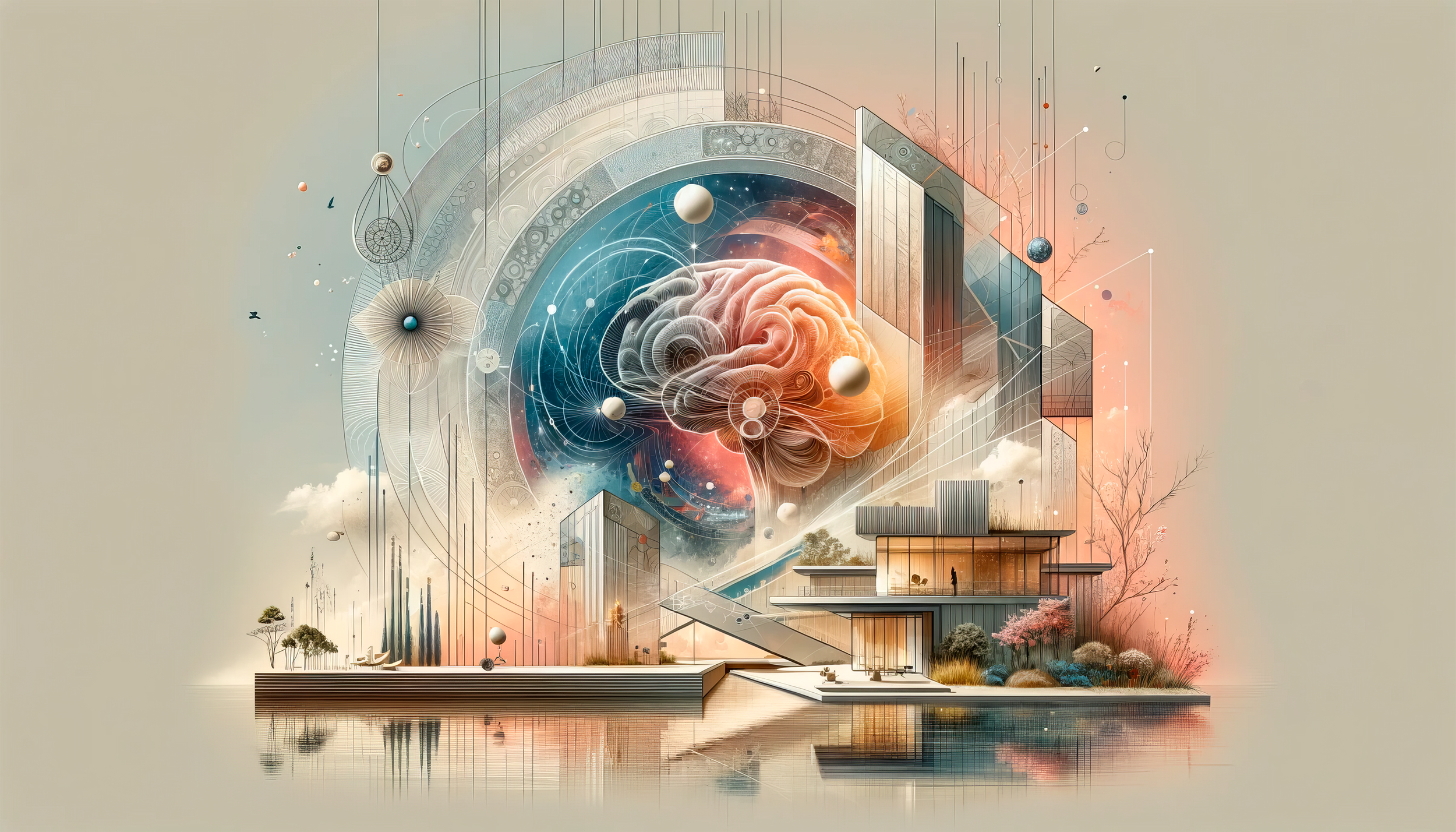
Exploring the Blueprints of Perception
"We shape our buildings; thereafter, they shape us. In the intricate maze of the mind, every wall, every corridor, reflects not just our vision, but our very being. It is in the spaces we create, that the tapestry of human thought finds its mirror."
$ Blueprints of Perception.
The podcast where architecture meets neuroscience. Join us as we journey through leading architectural studios and cutting-edge cognitive science labs, exploring how empirical data shapes our built environments and delves into the mysteries of human sensory experiences. In each episode, we uncover the intricate dance between physical spaces and the mind's perception, bridging the gap between the tangible structures we inhabit and the natural world we perceive.
What We Believe In
At Space.Brain.Science, we are steadfast in our belief that the realms of architecture and neuroscience are profoundly interconnected.
We believe that our built environments are not just physical structures but dynamic spaces that interact with our minds, influencing our thoughts, emotions, and behaviours.
We champion the pursuit of empirical evidence and scientific rigour in understanding how the natural and constructed world around us shapes sensory and visual perception.
Our commitment is to bridge the gap between these two disciplines, fostering a deeper appreciation of how space and cognition coalesce to define human experience.
Through our podcasts and research, we aim to unveil the subtle yet powerful ways architecture impacts our neurological landscape, advocating for designs that harmonise with our innate perceptual needs.
Where We Dream of Going
At Space.Brain.Science, our aspirations extend beyond the realms of current knowledge, venturing into uncharted territories where architecture and cognitive science converge.
We dream of pioneering a future where every built space is a marvel of design and a nurturing environment for the mind.
Our vision is to uncover profound insights into how sensory and visual perceptions are moulded by our surroundings, guiding us towards creating spaces that are in true harmony with human neurological needs.
We are committed to pushing the boundaries of understanding and exploring how the subtle interplay between physical form and mental well-being can lead to revolutionary architectural innovations.
Our journey is one of endless curiosity, driven by the belief that the spaces we create and inhabit can profoundly uplift the human spirit and enhance our collective experience.
“It is in the spaces we create, that the tapestry of human thought finds its mirror."
Teams and studios We’ve Visited
Embark on a journey with us as we anticipate visiting an array of pioneering teams and studios, where groundbreaking work in architecture and cognitive science is shaping our understanding of space and perception.
Fascinating Research in Our Focus
Dive into the realm of "Intriguing Discoveries," where we delve into groundbreaking studies that captivate us, unraveling the complex interplay between architectural design and the cognitive processes that shape our experience of space.
A Methodological Perspective on Neuro-Architecture
The Ecological Approach to Visual Perception
A Scoping Review of Neuroarchitecture and Its Precursor Approaches
All about the ‘wow factor’? The relationships between aesthetics, restorative effect and perceived biodiversity in designed urban planting
How Hospital Gardens Help Patients Heal
The evolution of neuroscience for architecture
The neuroaesthetics of architectural spaces
How You Can Help
At Space.Brain.Science, your insights and experiences are invaluable to our quest for understanding the complex relationship between architecture and the human mind.
By sharing your perspectives, whether you're a professional in these fields or simply someone with a keen interest in how spaces affect us, you can enrich our exploration and discourse.
We invite you to contribute to our journey - engage with us, offer your feedback, or even join us as a guest on our podcast.
Your involvement not only aids our research but also weaves your unique narrative into the evolving tapestry of how we perceive and interact with the spaces around us.
Together, we can uncover new dimensions in the symbiosis of architecture and cognitive science.
Our Backers
Be the first. As we embark on this groundbreaking journey at Space.Brain.Science, we are actively seeking forward-thinking backers who share our passion for exploring the nexus of architecture and cognitive science. If you are inspired by our mission and see potential in this unique intersection, we warmly invite you to reach out and discuss how we can collaborate to shape the future of this exciting field.
Don't Miss Our 'Blueprints of Perception' Podcast!
As you explore the depths of Space.Brain.Science, remember to tune into our podcast, "Blueprints of Perception." It's your gateway to understanding the extraordinary relationship between architectural spaces and the human mind. Join us in each episode as we venture into the worlds of innovative architecture and cutting-edge cognitive science. Uncover the secrets of how our environments shape our perceptions and experiences. Listen, learn, and be inspired.
About Zakaria Djebara
Zak Djebbara is an assistant professor at Aalborg University focusing on the role of architectural affordances in cognition and behavior by use of mobile EEG, VR, and computational neuroscience. Zak is antidisciplinary and makes use of any method relevant to the research question. He is currently investigating how sensorimotor brain dynamics modulate behavior and cognition through perceived rhythms.
About Anders Barslund
Anders, an architect from Virum, Denmark, integrates neuro-aesthetic principles in his architectural designs. His approach emphasizes how spaces influence human behavior and emotional responses, focusing on the intersection of architecture and neuroscience. His projects showcase an understanding of how environments can impact well-being and cognitive function. Barslund's website offers insights into material selection and design solutions that cater to the neural and sensory experiences of inhabitants, reflecting a deep engagement with the neuroscientific aspects of architecture.



